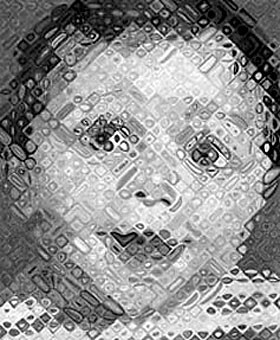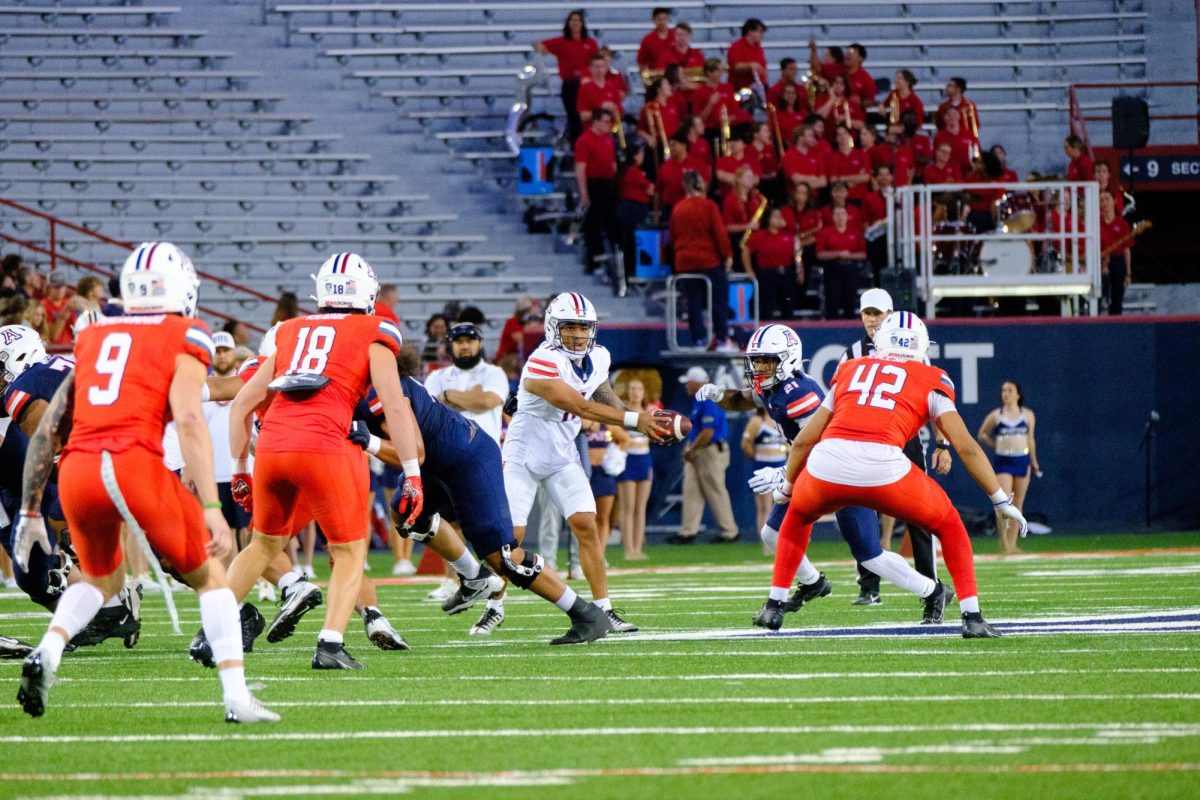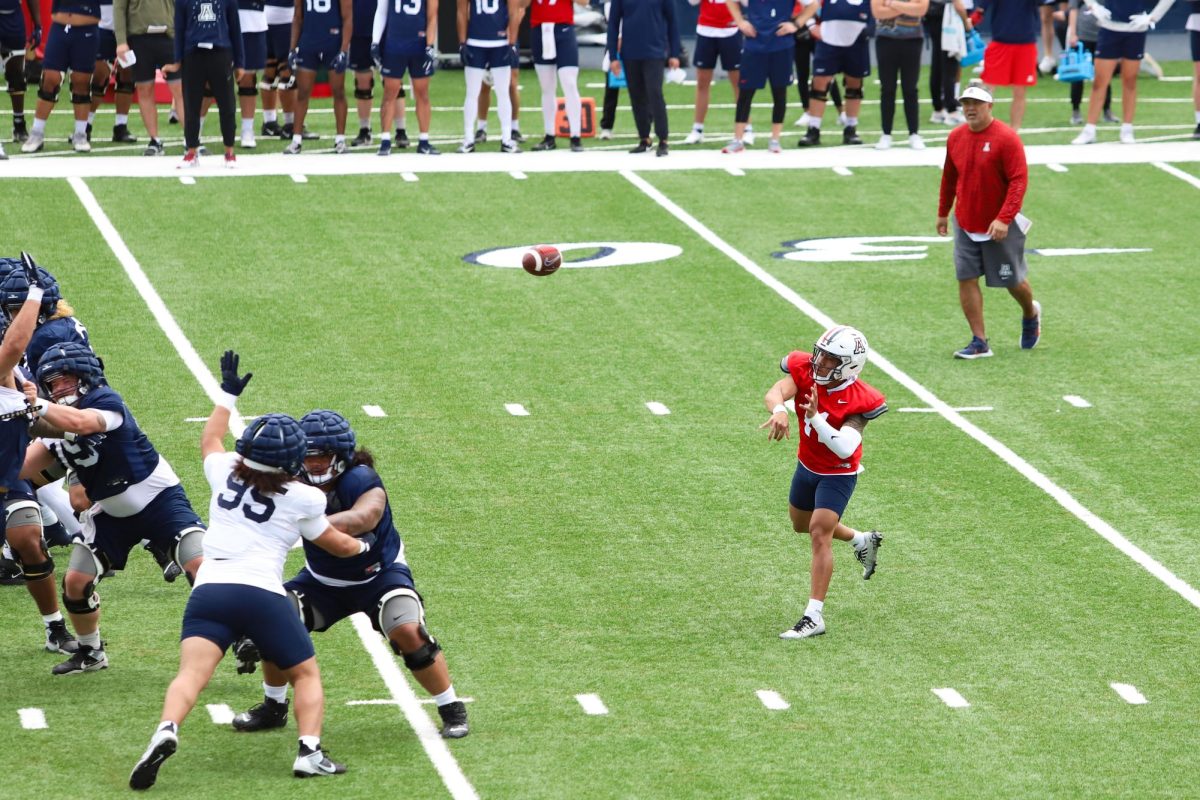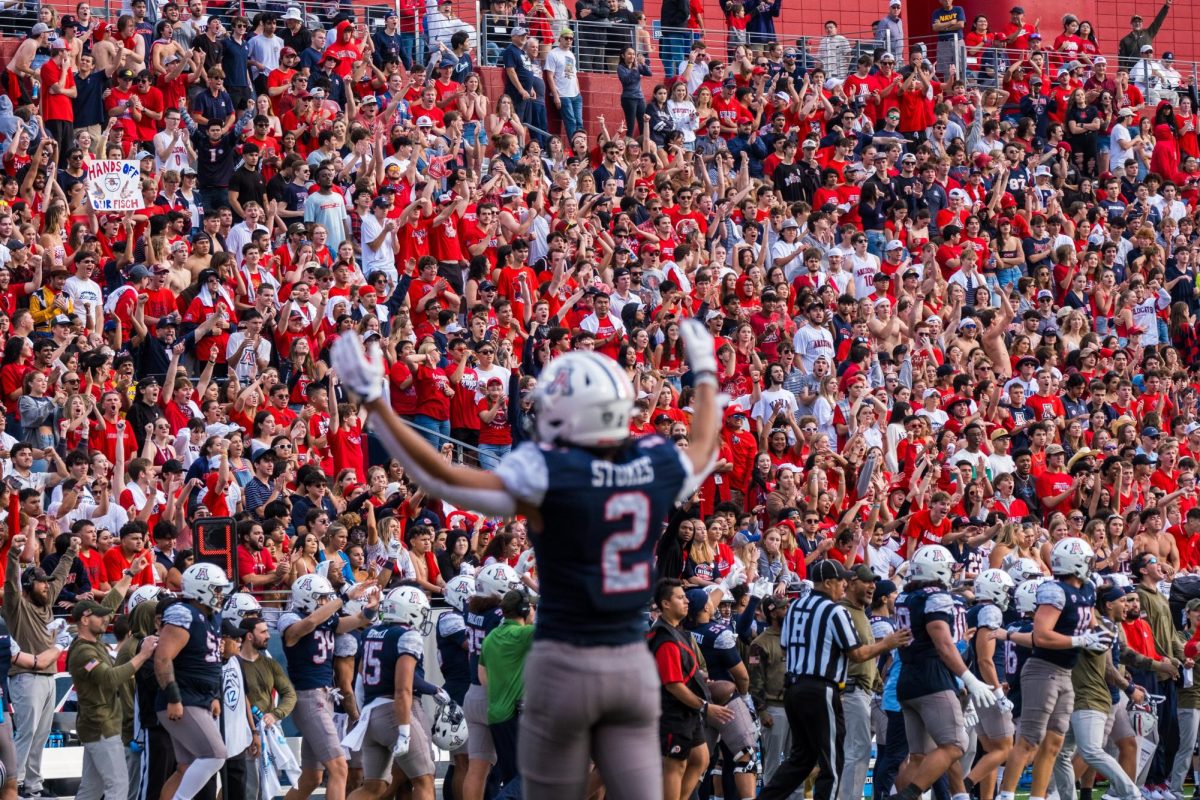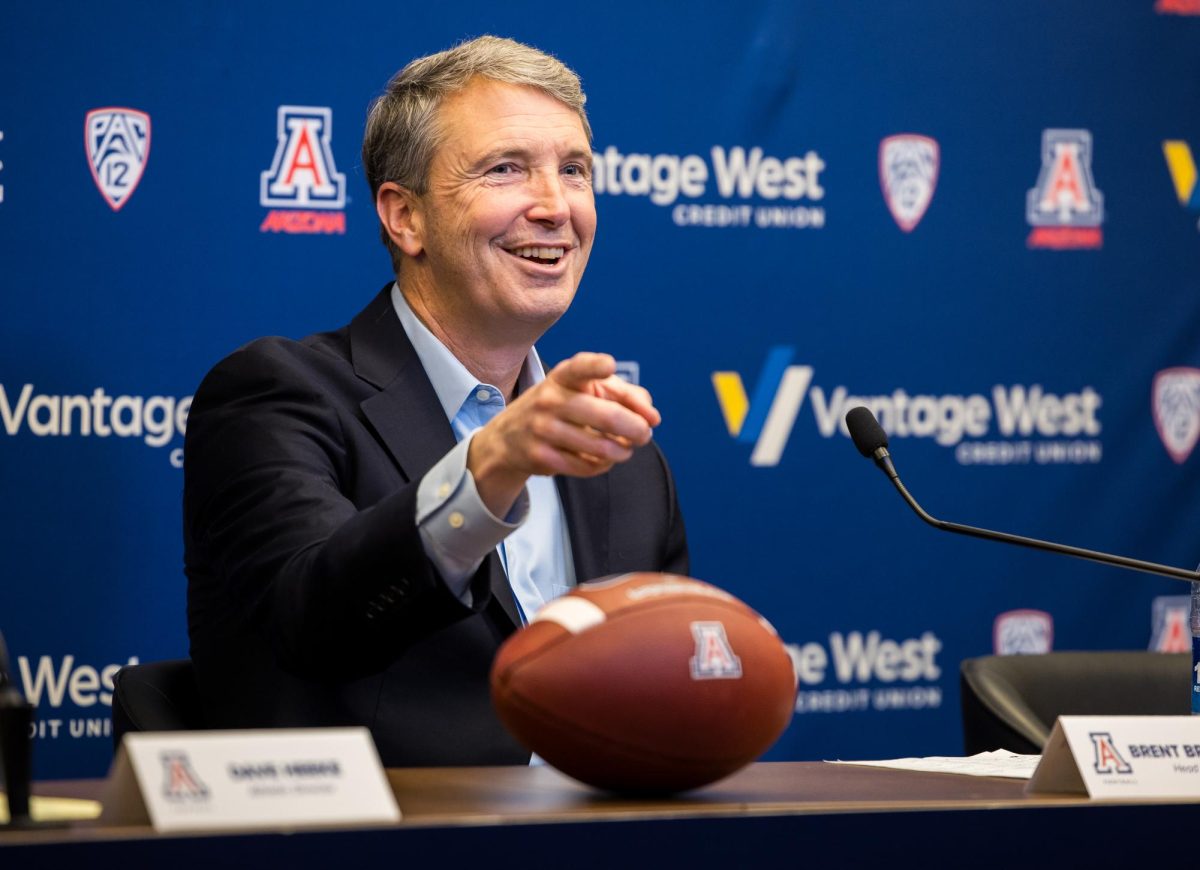Like fingerprints or snowflakes, every museum throughout the UA and downtown Tucson is different and unique in its own way.
From paintings of religious icons in the seventeenth century to photography of bikers and their Harley Davidsons, Tucson art differs drastically based on the decisions of museum administrations and the ideas of each individual curator.
For Julie Sasse, curator of the Tucson Museum of Art, 140 N. Main Ave., creating exhibits involves fine-tuning ideas and coordinating them with the constraints of time, money and scheduling conflicts.
“”Every institution is different and curators are hired with that in mind,”” Sasse said. “”There are many factors to consider including the logistics of space, the limitations of budgets, and the amount of time necessary to fundraise and produce a great exhibit.””
A curator for the TMA now for six years, Sasse said she has learned to prepare herself for the unexpected, even in the world of still paintings and photography.
“”Once we had an unfilled space within an exhibit when something fell through,”” Sasse said, “”so I ended up filling it with art from 55 artists in six months.””
In general, Sasse said, curators plan for their exhibits up to four years in advance. While all ideas for exhibits may not actually take life, curators must always stay up to date and on their toes in case something comes through that coordinates perfectly with the mission of the museum.
For example, Sasse said, a current exhibit titled “”Virgins, Saints and Angels: South American Paintings 1600-1825 from the Thoma Collection,”” came to TMA and could not be turned down because how well the pieces reflected the mission of the museum.
“”We have long wanted to make a greater commitment
We are trying to bring in new contemporary artists whose work somehow acts in conversation with the work that we have in collections.
Lisa Fischman,
currator, UA Museum of Art
to art from Latin America,”” Sasse said, “”we were approached by Stanford to feature the exhibit in their traveling show and, given what it was, we just couldn’t pass it up. Even if curators themselves had ideas for this time period, the exhibit was a once in a lifetime opportunity.””
Featuring bright oil on canvas depictions of angels and saints dating as far back as the 15th century, Sasse said the decision to feature “”Virgins, Saints and Angels”” has proved beneficial to the TMA in boosting attendance rates and reinforcing the museum’s mission.
“”Really, the main thing that underlies everything is quality and excitement in bringing something to the museum that will attract new people and bring the visibility of the museum to a higher level,”” Sasse said. “”We have to work so that schedule, money and focus all create an equal balance.””
As another example of the way in which curators must be prepared to drop current plans and run with an idea, Sasse said the TMA is now working on an exhibit of biker photography that will coordinate with a biker rally coming through Tucson in the month of May.
“”We contacted local Tucson artist Ann Simmons-Meyers and discovered that she had an intact exhibit of biker photography and we wanted to rise to the occasion of the biker rally,”” Sasse said. “”One minute it’s a biker expedition and the next minute it’s religious paintings from the seventeenth century,”” she added with a laugh.
And while every institution is different, Sasse said that in general, artists do not charge a fee to have their work exhibited. On average, she added, unless a museum is commissioning an artist to create something new specifically for an exhibit, the cost remains relatively low.
Lisa Fischman has worked in coordinating art exhibits for over a decade. Now the curator for the UA Museum of Art, 1031 N. Olive Road, for just over a year and a half, Fischman said she took the job out of excitement and curiosity.
“”When I saw this job, I thought it would be a crazy adventure,”” she said.
Turns out, she added, it has been. With more artwork in storage than is on the floor, Fischman decides what stays on exhibit and what goes.
Often, she said, the same pieces can be rotated within different exhibits to be viewed in new ways each time.
“”However they’re arranged, they’ll tell a story,”” Fischman said of rotating artwork. “”The same piece could look different based on context, and we want people to see how art ranges.””
While most of the exhibits in the UAMA vary in length from eight to twelve weeks, Fischman said one of her primary goals is to bring in new art from both contemporary and living artists.
“”We are trying to bring in new contemporary artists whose work somehow acts in conversation with the work that we have in collections,”” she said. “”It makes things more lively and helps to create a balance.””
Although many ideas for UAMA exhibitions are Fischman’s alone, a community of curators has emerged, she said, full of friends who assist in formulating ideas by discussing traveling exhibits or art that they think is particularly cool.
“”There is a network of info that is happening,”” Fischman said. “”Curators talk to one another from around the world and the Internet has provided a way to search for art in a new way.””
For Fischman, creating exhibits that reflect the multitude and diversity of international art within the university community is on the top of her curatorial list.
“”Within this campus is an increasing international community,”” she said. “”And (the UAMA) museum collections and exhibitions should reflect that.””
So the next time you walk through a particularly awesome art collection, whether it be an international or local exhibition, stop and give a shout out of praise to the museum curator. For without their inquisitive eye, we may never know how to distinguish “”art”” from the squiggles on bathroom walls.



